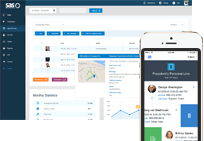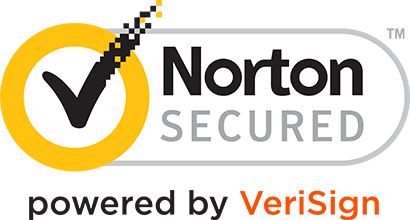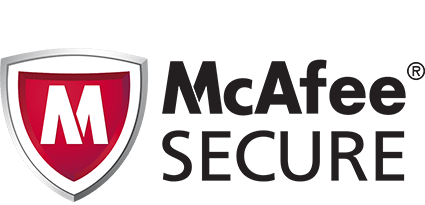- Log In
- Support
- Company
- Contact Us
- Live answers @ 1-888-532-4794
Small Business Pricing to Win, Part 1: What’s your strategy?

If you are a small business owner, the success of your business isn’t about how cool your logo is or what your product does – because chances are, there are other small businesses with cooler logos and products just like yours. Now don’t get us wrong – marketing is of course what brings people to your doorstep in the first place. But at the end of the day, all things being equal, your success is largely determined by your pricing.
Pricing impacts, and is impacted by, every business activity from hiring to sales. Economic theory says that supply and demand define price, but what do economists know anyway? Whatever is going on in the market, businesses that work hard to make their products and services more attractive to consumers will increase demand, and in turn, command a premium price tag.
Despite its importance in business success, many small business owners struggle to price their products right. In fact, this topic is so ginormous that even the basics can’t be covered in a single post. So, we’ll be looking at pricing strategies for small businesses as a 4-part series where we’ll be reviewing everything from pricing strategies to external vs. internal factors to common mistakes.
In Part 1 of the series, we’ll discuss the ideal use case and the pitfalls of the 5 most popular pricing strategies for small businesses: value-based pricing, the lowest-price model, the cost-plus model, pay what you want, and dynamic pricing.
#1: Value-Based Pricing
This strategy is based on the question, “How much is the customer willing to pay?” Value-based pricing is a customer-centric approach and often allows you to charge much higher prices by showcasing the value that your product or service brings to the table. One of the biggest advantages of this strategy is that you will be able to enhance your gross margins significantly.
Ideal for: Situations where the value for customers is much higher than the cost of production. This is not suitable for commodity products or services.
Pitfalls: Unless you know exactly what the customer is willing to pay, or the cost of available alternatives, pricing will never be perfect.
#2: Lowest-Price Model
It’s pretty self-explanatory. You offer the price that is the lowest in the market. The advantage here is that pricing is very clear, and you can attract price-sensitive consumers.
Ideal for: Commodities, or if you have substantial cost advantages over your competition.
Pitfalls: Typically, the lowest price model is not suitable for small businesses. It can negatively impact the perception of quality and lead to pricing wars with competitors. Not only that, but for the uber price-conscious, you can bet they’ll switch as soon as they find something cheaper.
#3: Cost-Plus Model
In this model, you determine the total cost of producing, distributing, and selling your product. This is the break-even point where there is no profit or loss. Then, based on your targeted profit, a markup is added to the price. For example, if the break-even point is $5 (cost) and you need a 20% margin ($1), then you price the product at $6.
Ideal for: Determining the rack rate over which discounts and offers can be provided.
Pitfalls: Most small businesses do not consider all costs involved while arriving at the break-even price. And if your pricing is too high and you cannot justify value, then customers may not be willing to pay what you are charging, especially if the competition is offering a lower price.
#4: Pay What You Want
The basic premise here is similar to value-based pricing, except now the customer has control over how much they want to pay you for your offering. In some cases, a floor price may be set as guidance for the buyer. This model was not popular earlier, but is now becoming more and more common. As the Internet allows for faster price discovery, customers are able to readily see how much your competition charges for similar services and what other buyers are paying.
Ideal for: Social or charitable enterprises that appeal to the conscience of the buyer.
Pitfalls: This is not suitable for a Business-to-Business sales model where the buyer has a specific budget earmarked for purchase.
#5: Dynamic Pricing
This is a flexible pricing mechanism where the pricing varies with some factor such as time or demand. When demand peaks, the price also increases. In order to effectively implement dynamic pricing, you should have near real-time data available for whatever you are selling. If your offering is in a price-sensitive market, you need to constantly monitor competitors’ pricing and adjust your numbers accordingly. A variation of dynamic pricing is price discrimination, where the same product is charged differently for different customer segments, e.g. based on geography, age, etc.
Ideal for: Situations where your inventory is perishable, e.g. airline or theater tickets; Internet-based sales where traffic data can be easily monitored and measured.
Pitfalls: In a dynamic pricing scenario, customers are likely to postpone purchasing to wait for a better deal.
If the Top 5 Strategies Don’t Work, How About 7 Others?
The top 5 strategies will generally fit for most small businesses, but if none of the options above seem appropriate for your needs, read on. These pricing methods focus exclusively on winning market share:
- Decoy Pricing: The price of one product is kept high to boost the sales of the lower priced product.
- Loss-Leader Pricing: One product is sold at a loss in order to win the customer and boost sales of other products.
- Penetration Pricing: You set the price low in order to garner market share, and then raise prices later.
And that’s not all! There are pricing models such as:
- Relationship Pricing: Businesses use long-term contracts and price bundling (combining products or services to increase value) that are perceived as beneficial to consumers. Thus, they are encouraged to maintain lasting business relationships.
- Psychological Pricing: Prices are listed as slightly below their cost, which looks better to consumers and maximizes revenue, e.g. pricing something as $4.99 instead of $5, or $99 instead of $100.
- Freemium: Consumers get basic features at no cost and can access advanced features, products or services for a fee.
And who could forget:
- Skimming: Usually used at the launch of a new product or after it has exhausted its usefulness, skimming targets consumers who are willing to pay a premium and helps companies gain market share.
So how do you decide which will work best for your business? There is no really good answer here. The bottom line is, it takes time and research to get it right. But if you decide on things willy-nilly and you get it wrong, it could prove to be a costly mistake, or worse yet, the end of your small business. Don’t let that happen to you!
In our next post, we’ll look at factors that determine pricing, including internal factors such as strategy-based and cost-based factors, and external factors such as competition and geography. Stay tuned!
Categories
- Advice (32)
- Answering Service 101 (18)
- Best Practices (10)
- Call Center Jobs (6)
- Call Center Software (20)
- Comparison (2)
- Customer Service (30)
- Funny (31)
- Holidays (19)
- Industry Hacks (19)
- Infographics (53)
- International (1)
- Medical (8)
- News (12)
- Phone Etiquette (2)
- Phones (14)
- Pricing (8)
- Quizzes (3)
- Receptionist (11)
- SAS Products (29)
- Scripting (4)
- Services (5)
- Small Business (25)
- Starting Up (7)
- Tips and Tricks (19)
- Uncategorized (1)
- Videos (19)
- Workplace (6)
Recently writen
- Call Center Script Best Practices: Advanced Script Block Tips to Optimize Your Answering Service
- January 2025 Release Notes – Adjustments to Call Details Timeline, New Scripting Updates, Live Transcription, and more!
- April 2024 Release Notes – Voicemail Greetings, Ability to Access Websites With a Username and Password, and more!
- March 2024 Release Notes – New Add-On, Settings Revamp, and more!
Follow Us
How about a demo?
We'll show you how our web portal works and answer any questions you have about SAS.
Schedule a demo







